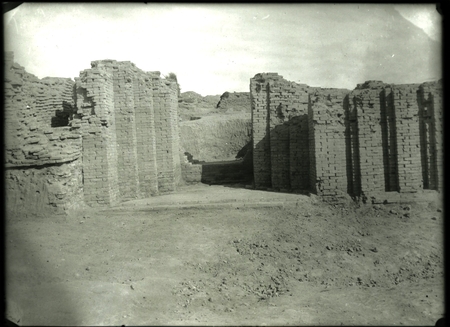Tello: a Sumerian kingdom

An archaeologist trained at the École du Louvre, André Parrot led three major archaeological excavations: Tello, Larsa and, above all, Mari. Still used today, his research has made a major contribution to the archaeology of the Near East.

Born in Désandans, in the Doubs region, in 1901, André Parrot trained at the Ecole du Louvre and then the Ecole archéologique de Jérusalem in 1926-1927, where he met his mentors, René Dussaud and Edouard Dhorme. They entrusted him with his first field missions (Neirab and Baalbek), and then the direction of the excavation at Tello, from 1930. After beginning his test pits at Larsa, he was tasked by Dussaud with directing research at the site of Mari, on the middle Euphrates.
Based in Abu Kamal, from January 1934 the mission found royal statuettes that made it possible to identify the site. After the excavation of the temple of Ishtar, André Parrot discovered the Great Royal Palace and then the buildings of the city's religious centre, including the high terrace and surrounding temples. Thousands of tablets inscribed in cuneiform were also found under his direction. Research resumed after the war, revealing more shrines and pre-Sargonic palaces.
Over the course of 21 research excavations, from 1934 to 1974, André Parrot and his teams built up resources on a considerable scale, from research results, drawings and records to a particularly large number of photographs of the excavations.
Apart from his research and many publications, André Parrot was also the first director of the Musée du Louvre between 1968 and 1972 and Secretary General of the Commission des fouilles between 1959 and 1973.